Nasa SpaceX launch: Evolution of the spacesuit
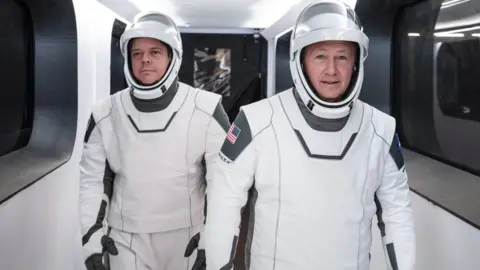 NASA
NASAThe spacesuits worn by astronauts for the Crew Dragon mission have been getting a lot of attention. How do they differ from other astronaut attire down the years?
The futuristic flight suits worn by Doug Hurley and Bob Behnken during Saturday's successful launch look a world away from the bulky orange shuttle flight suits worn when astronauts last launched from Florida's Kennedy Space Center.
The helmets are 3D-printed and the gloves are touchscreen-sensitive.
But their primary purpose remains the same - to protect crew members from depressurisation, where air is lost from the capsule. The suits also ensure astronauts have sufficient oxygen and regulate their temperature. A communications link and breathable air are provided via a single "umbilical" cable in the seat that plugs in to the suit.
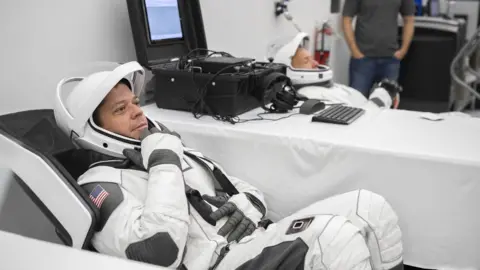 NASA
NASAThe Starman suits, as they've been called, are all in one piece and customised for the astronaut. Their look was conceived by Hollywood costume designer Jose Fernandez, who has worked on Captain America: Civil War and Batman v Superman: Dawn of Justice.
But they are just designed for use inside the SpaceX capsule, known as the Crew Dragon, and are not suitable for use on spacewalks.
Aerospace giant Boeing also has a contract with Nasa to carry astronauts to the space station in its CST-100 Starliner spacecraft. It has developed a pressure suit to protect astronauts during the key phases of launch and re-entry.
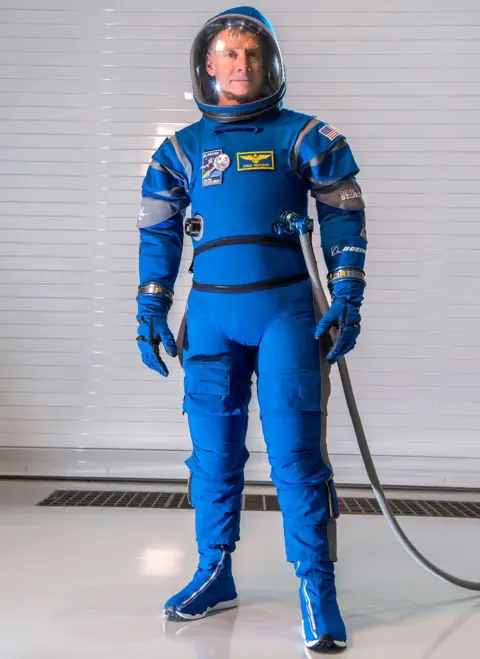 Boeing
BoeingThe Boeing Blue suits are about 40% lighter than earlier generations of spacesuits worn by American astronauts - and more flexible.
They contain different internal layers to keep astronauts cool. The suit also has touchscreen-sensitive gloves - so astronauts can work with tablets in the spacecraft. The soft, hood-like helmet features a wide polycarbonate visor to give Starliner passengers better peripheral vision throughout their ride to and from space.
Zips in the torso area will make it easier for astronauts to comfortably transition from sitting to standing.
In October 2019, Nasa shared a close-up look at two next-generation suits for the agency's Artemis programme. Under this effort, Nasa will seek to return astronauts to the Moon by 2024, using the agency's Orion spacecraft.
 AFP
AFPOne of the suits is called the Orion Crew Survival System, and is comparable to the suits used by SpaceX and Boeing. It recalls the so-called Pumpkin suits used by space shuttle astronauts, but is more lightweight.
The other suit, called the Exploration Extravehicular Mobility Unit (xEMU) suit is designed to be worn on the surface of the Moon. It is much bulkier than the pressure suits designed to be worn inside spacecraft.
This is because it needs to protect the wearer from temperature extremes outside the walls of the spacecraft. It is also designed to provide some shielding against micrometeorites and other small particles of space debris. In these respects, it is similar to suits previously used for spacewalking at the International Space Station (ISS).
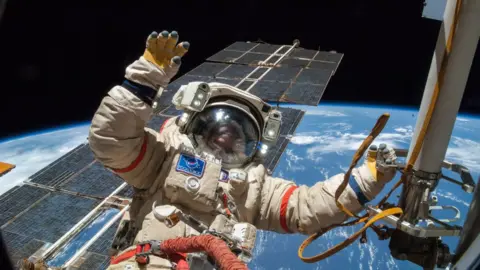 NASA
NASAThere are two suits used for spacewalking at the ISS. One is the Russian Orlan type, which was first used in December 1977.
The Orlan is a one-piece spacesuit. The "backpack" opens like a fridge door, allowing the spacewalker to climb inside.
Nasa's Extravehicular Mobility Suit (EMU) was introduced in 1981 and is the other suit used at the space station.
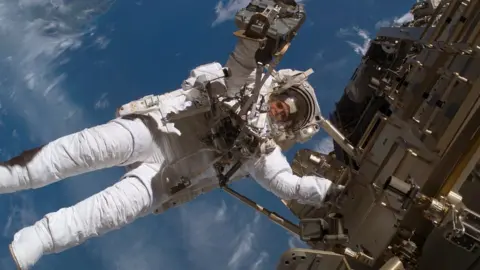 NASA
NASAUnlike the Orlan, the EMU comes in separate pieces, with a bottom and top half. The semi-rigid suit provides around 8.5 hours of life support for its wearer outside in the vacuum of space.
Astronauts travelling to the ISS train with both suits.
The suit worn by Apollo astronauts on the Moon was also called the EMU - though it's different from the modern design. It was the result of years of development.
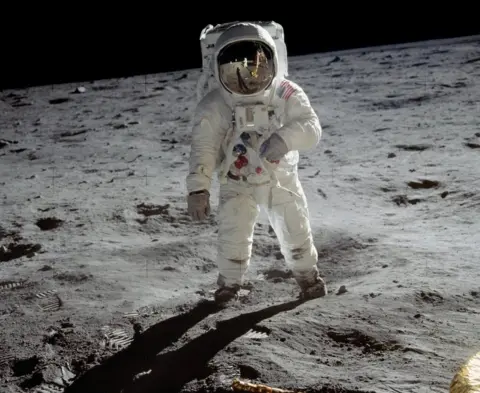 NASA
NASASpacesuits have come a long way since the first spacewalk by the late cosmonaut Alexei Leonov in March 1965.
Leonov's suit inflated after he stepped out into the vacuum, so that his hands came out of his gloves. Only by bleeding air out of the suit, which put the cosmonaut at risk of the bends, was he able to get back inside the spacecraft.
 Science Photo Library
Science Photo Library.
